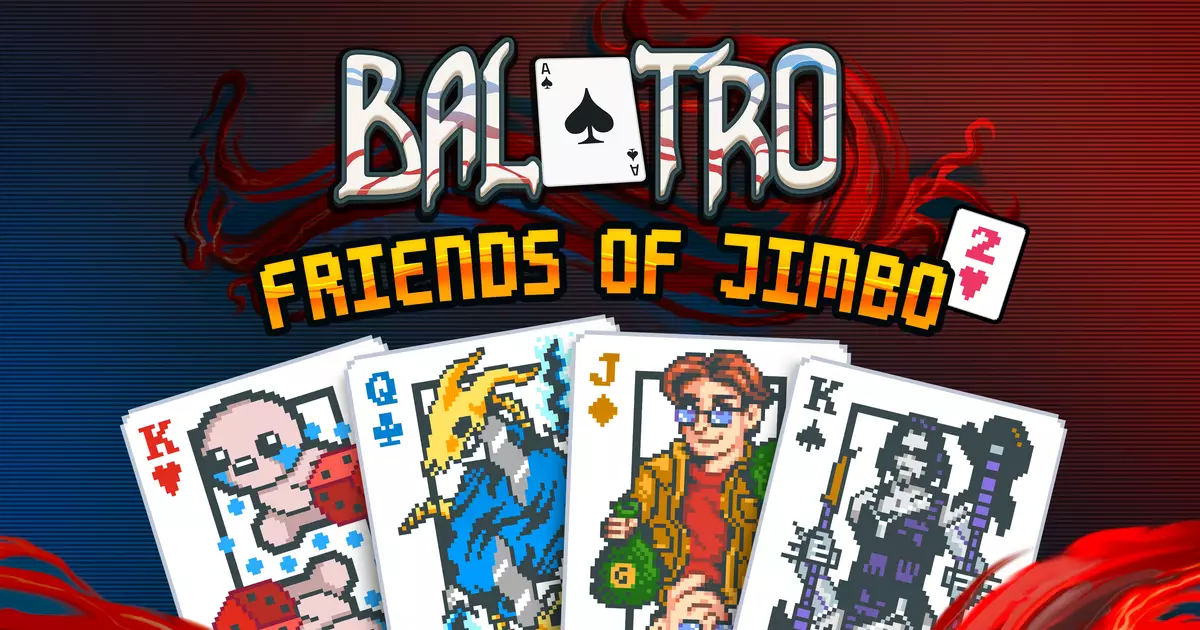In an ever-evolving gaming landscape, titles often catch our attention, only to quickly fade from memory. My brief encounter with Balatro exemplifies this phenomenon. Initially drawn in by its vibrant visuals and intriguing mechanics, I soon found myself navigating the game’s labyrinthine systems. After just an hour of play, I made the decision to uninstall it, firmly believing I had glimpsed the game’s true nature—the tempting trap designed to ensnare unwary players. Balatro presents itself with an enticing aura, yet for me, the charm was overshadowed by an awareness of the potential for addiction many games carry. Perhaps there exist players who could indulge in Balatro’s offerings without succumbing to its allure, but I deemed it safer to step away.
A Cosmetic Enhancement, Not a Game Changer
Recently, Balatro introduced a free update that added new card art inspired by popular titles such as *Binding of Isaac*, *Cyberpunk 2077*, *Stardew Valley*, and *Slay the Spire*. However, these updates are purely aesthetic, offering fresh skins rather than new gameplay mechanics or strategies. The interface now allows players to customize their deck’s appearance, but I wondered: does merely altering visuals enhance the gaming experience? For a game that positions itself on the excitement of strategic play, cosmetic alterations seem inconsequential. The game’s essence remains unchanged; it still relies on the foundational mechanics that initially captivated players. After all, what value do new skins hold if they don’t translate into substantive changes in gameplay?
Though my personal experience with Balatro was fleeting, it is essential to acknowledge the critical reception it received from other gamers and reviewers. Notably, Katharine from Rock Paper Shotgun lauded the game in her reviews, describing it as a celebration of numbers and achievements—a joyful romp through the chaos of gaming exploits. She articulated a compelling view, claiming that Balatro doesn’t seek to exploit players’ weaknesses. Instead, it invites players to embrace the struggle inherent to mastering its challenges, viewing setbacks as opportunities for growth. This perspective sheds light on why some players remain dedicated, drawn back into the fold time and time again, despite the frustrations that may arise.
The phenomenon that Balatro represents is both captivating and troubling. It embodies a design philosophy that rewards continuous engagement with a sense of accomplishment through progression. As the lines between casual play and deeper investment blur, players must navigate the inherent challenges of balancing enjoyment with the risk of addiction. Despite my withdrawal from the game, it’s impossible to ignore its ability to foster engagement. Players like Katharine find joy within the trials, relishing in taking on challenges crafted within what she described as “impossible odds.” This sentiment raises questions about the nature of enjoyment in gaming—should it be about mastering processes, or should it offer balance between challenge and relaxation?
My limited time with Balatro serves as a cautionary tale about the pitfalls of engaging with modern gamification strategies. However, it simultaneously illuminates the diverse responses such titles elicit. While I chose to withdraw to avoid potential pitfalls, it is crucial to recognize that for others, Balatro may represent an avenue for personal growth and achievement in the gaming world. In this complex interplay between attraction and caution, one must ask: what truly defines value in our gaming experiences? Balatro remains a fascinating case study in the realm of game design, appealing as it does to both the thrill-seekers and the wary navigators alike.


Leave a Reply